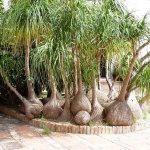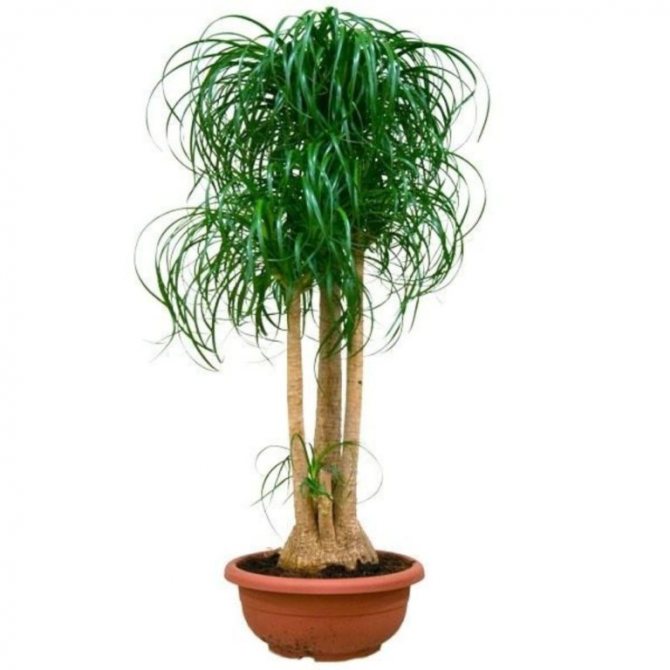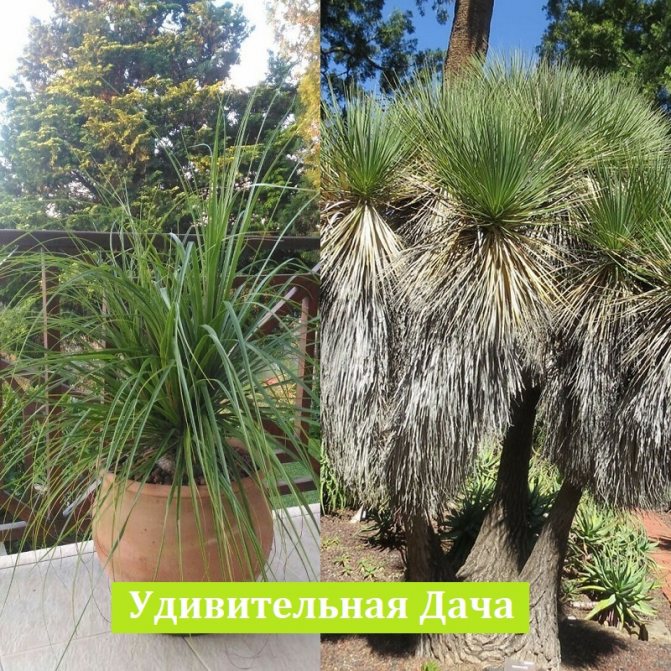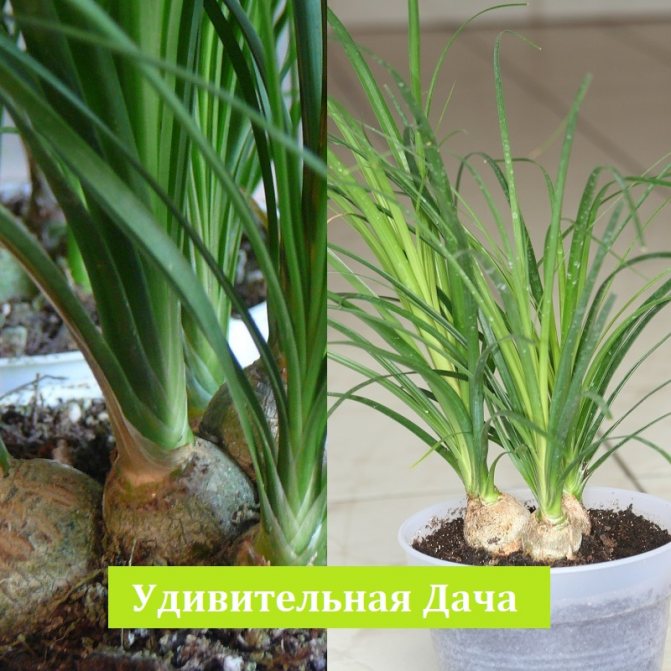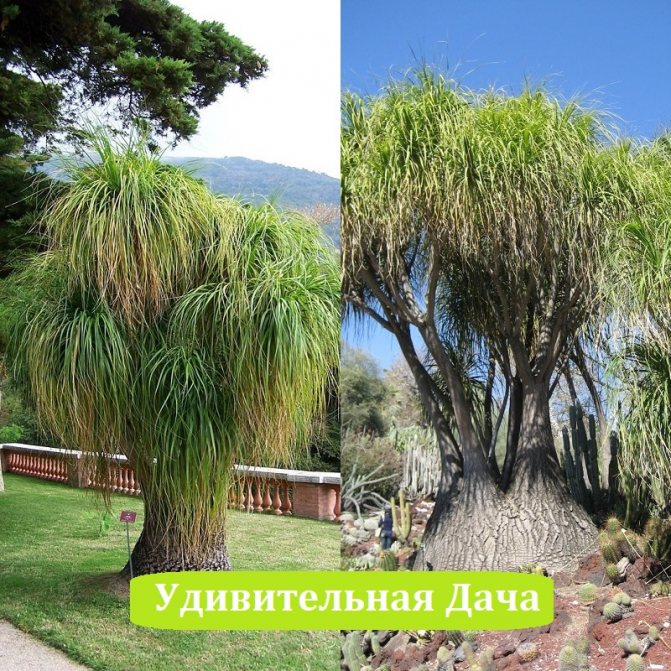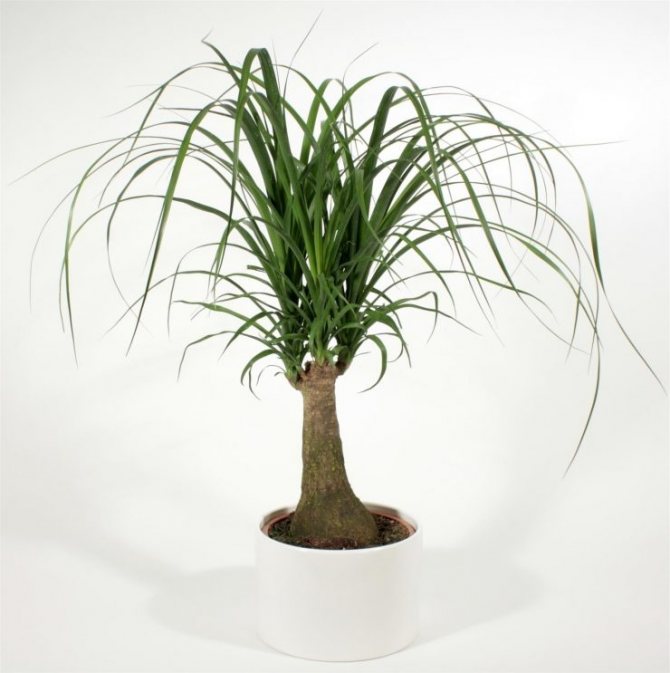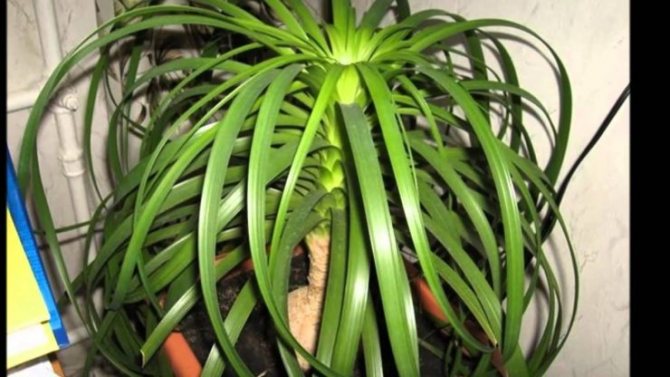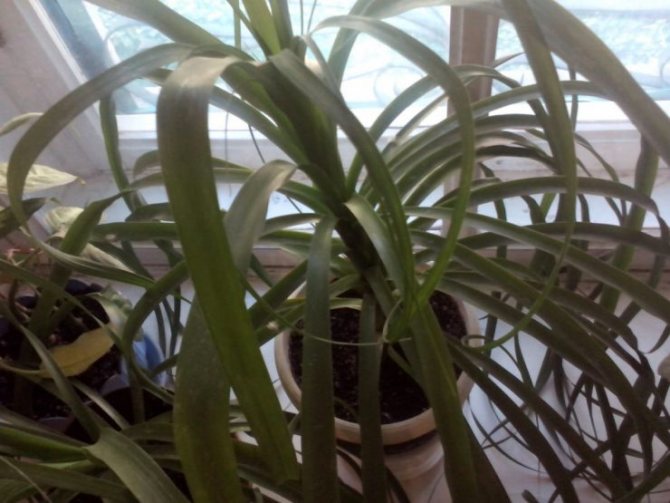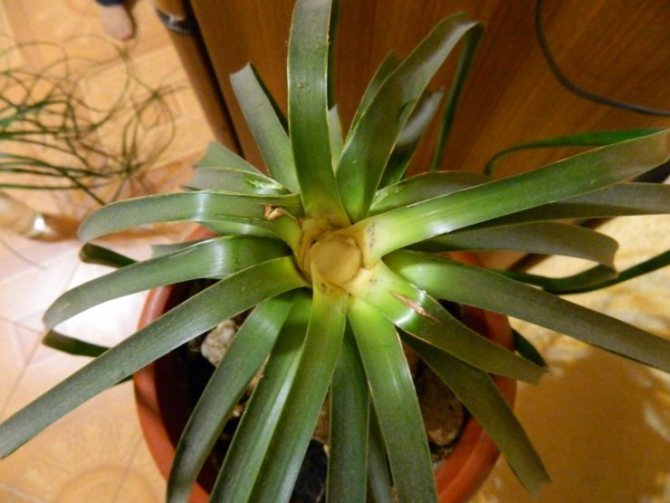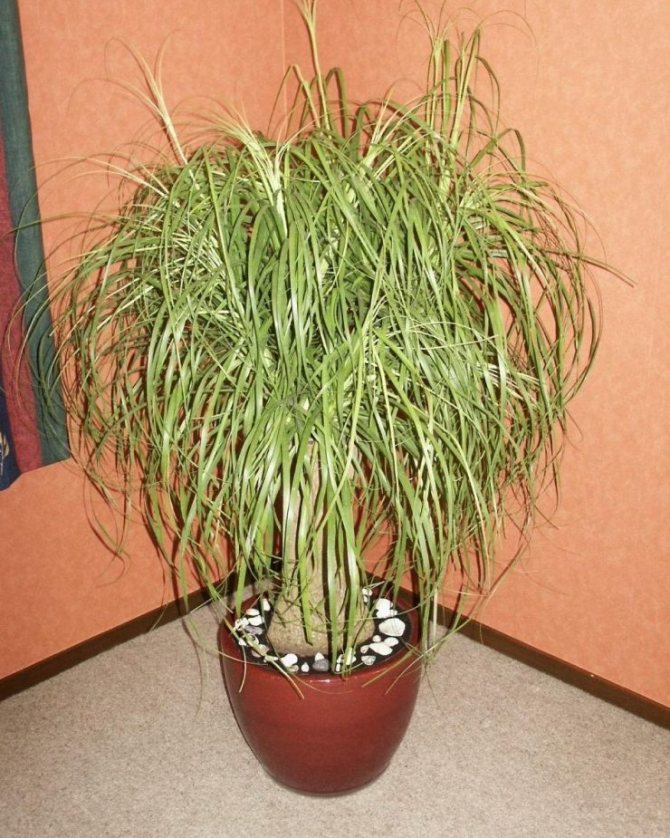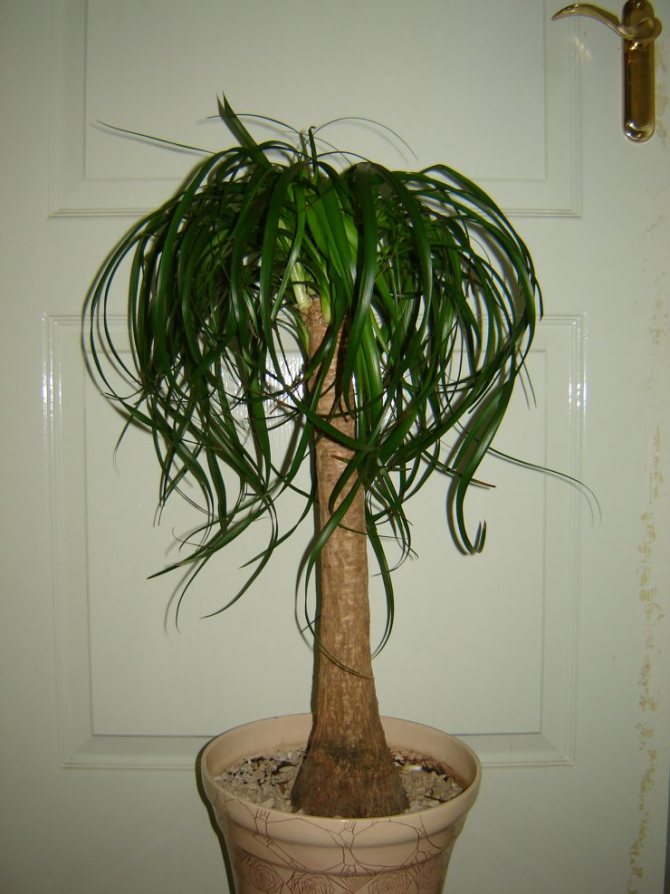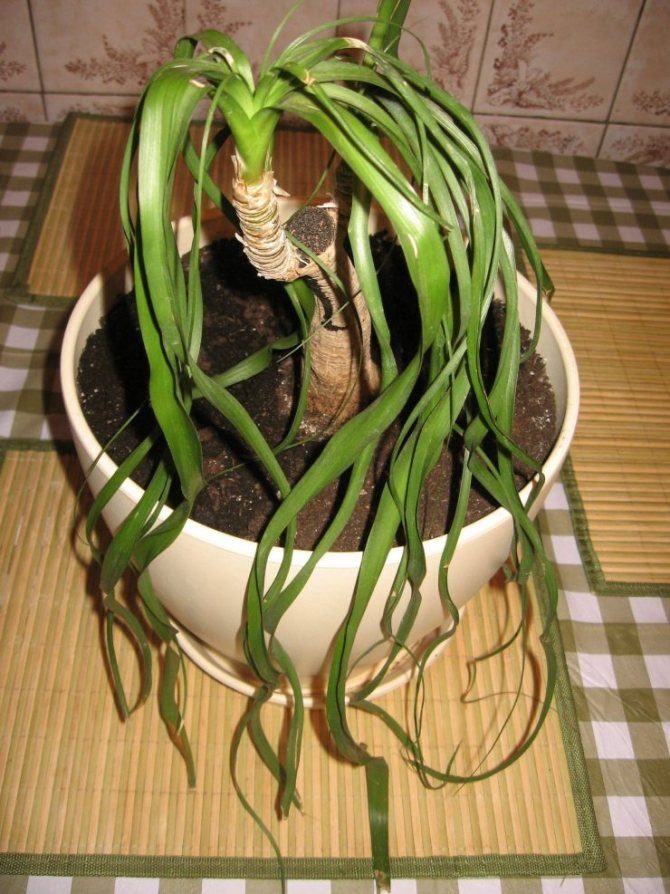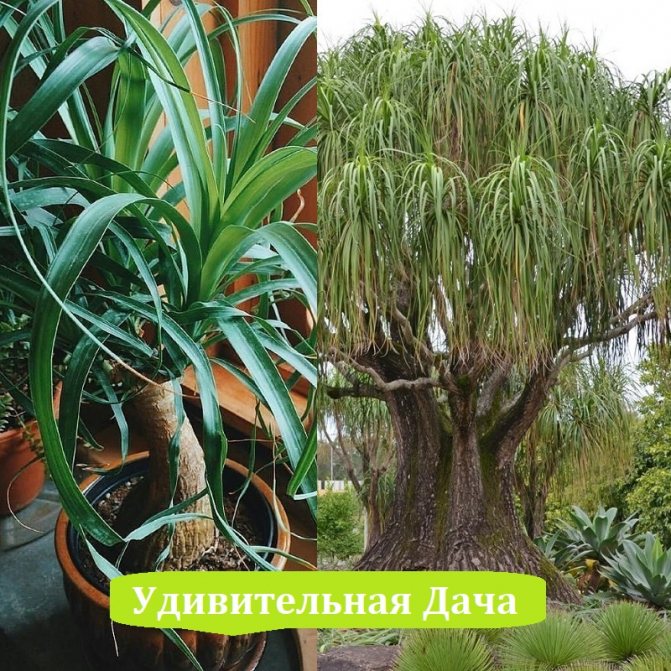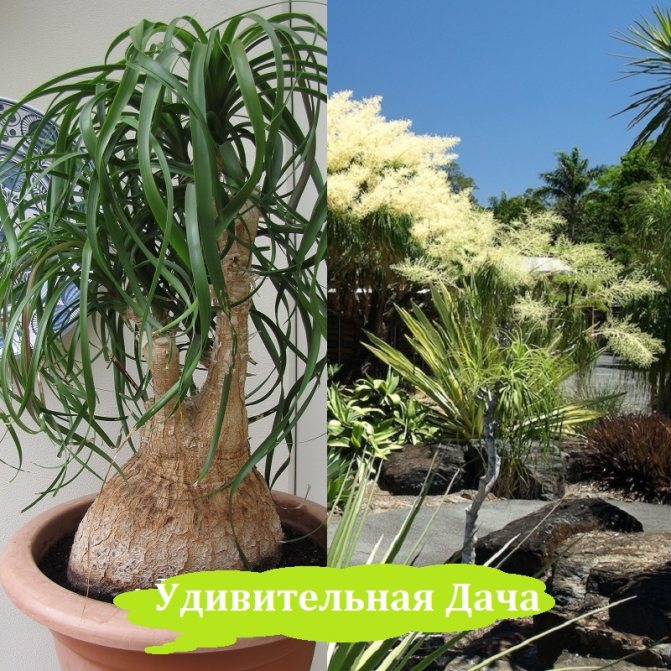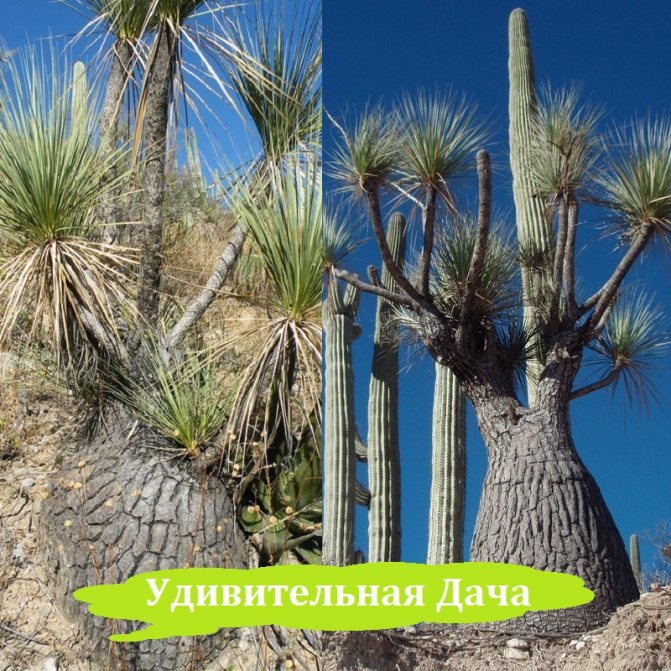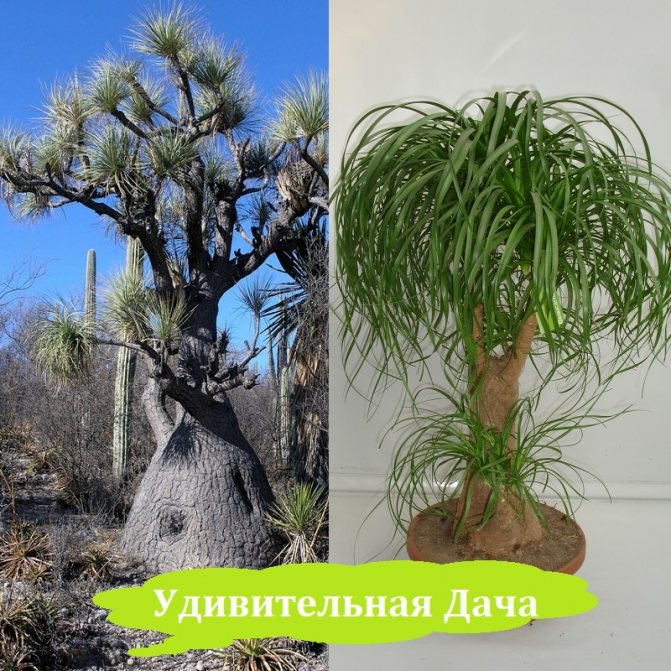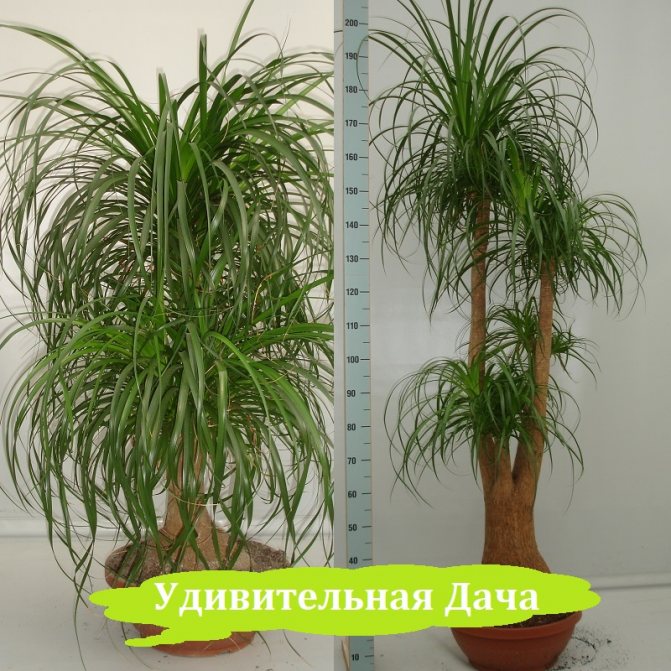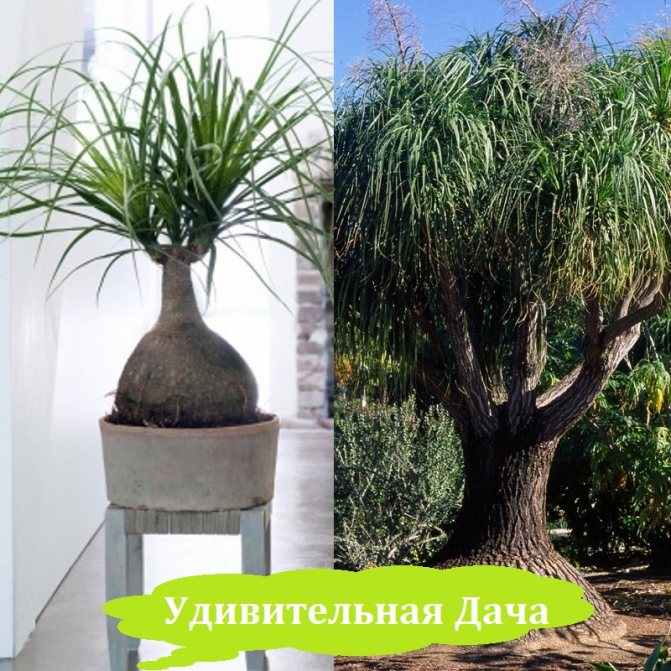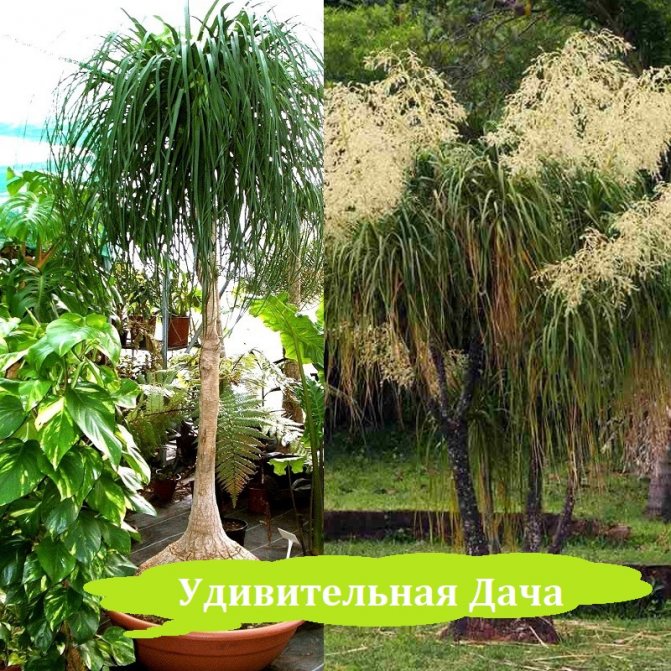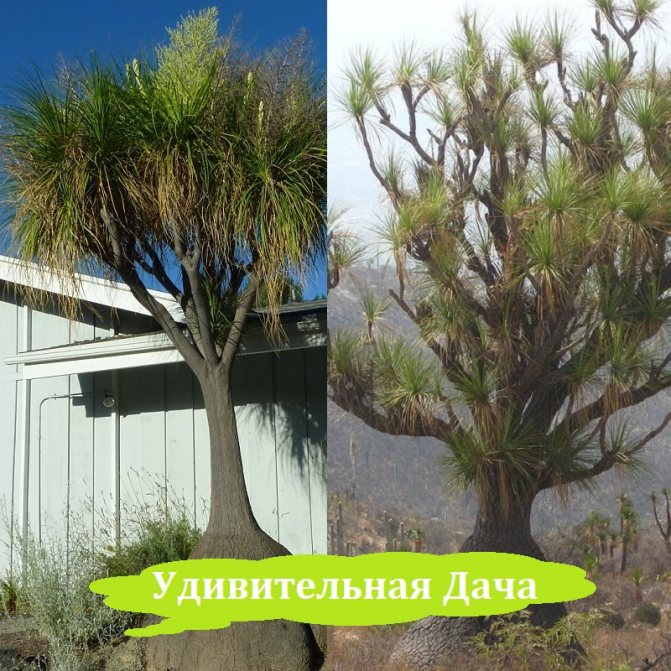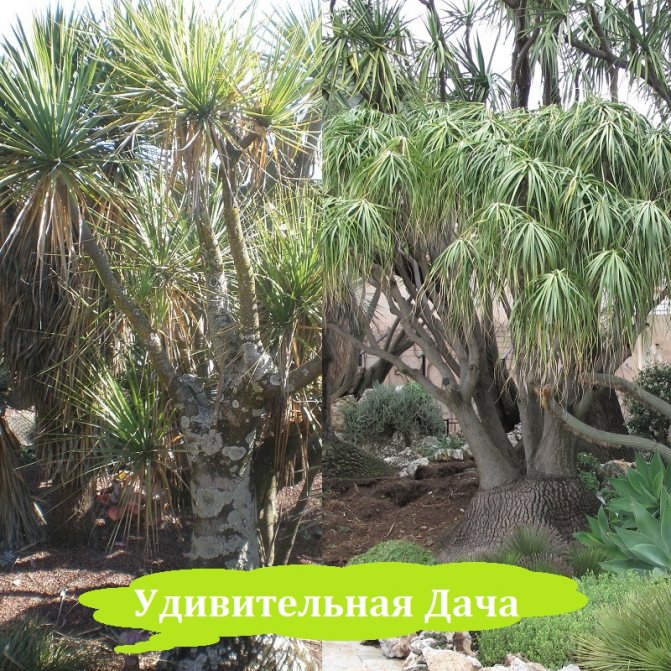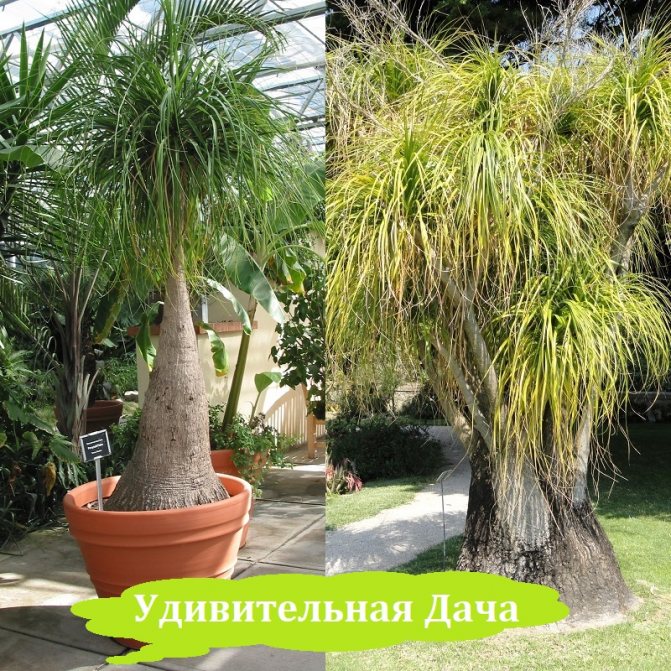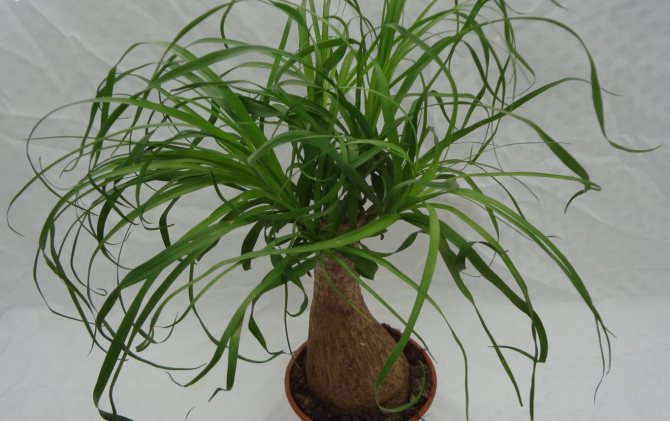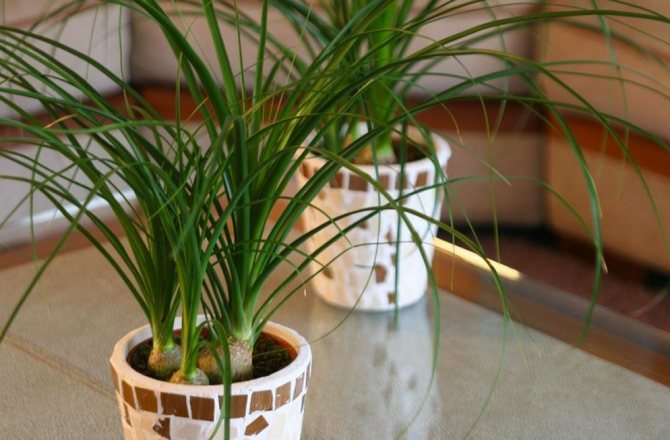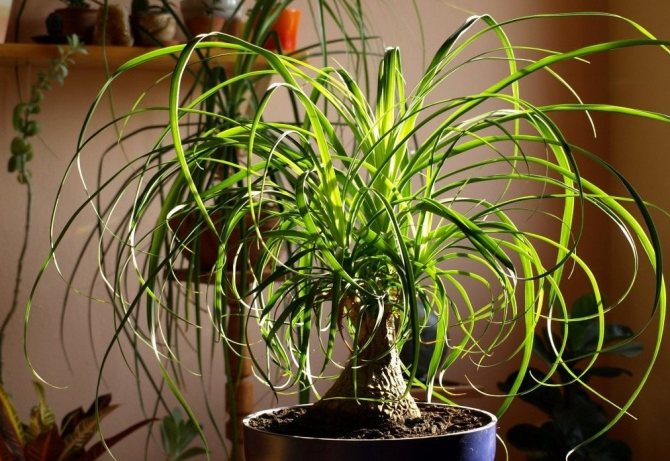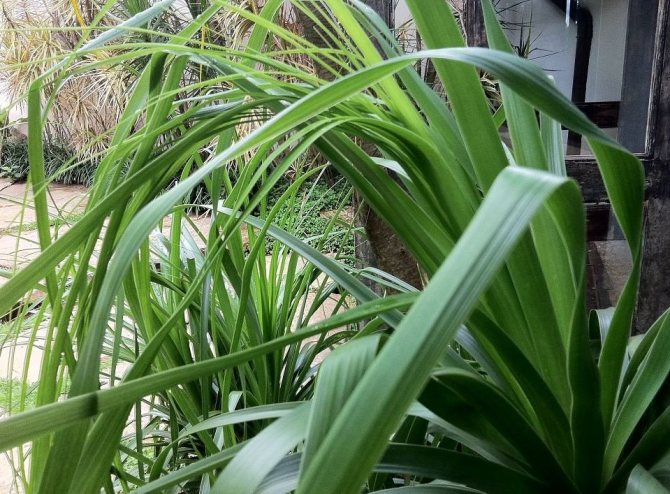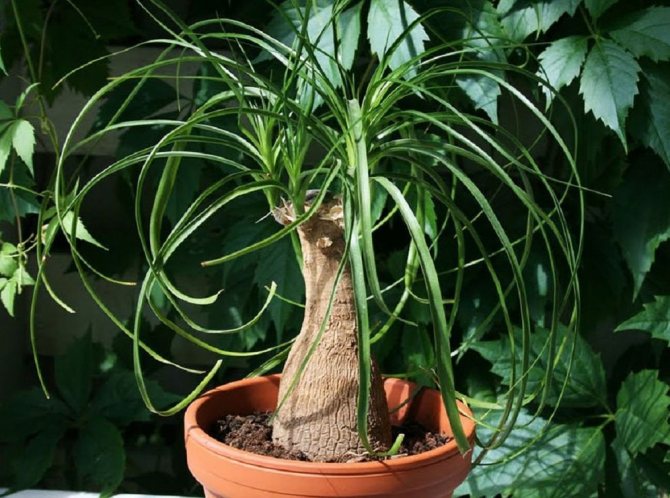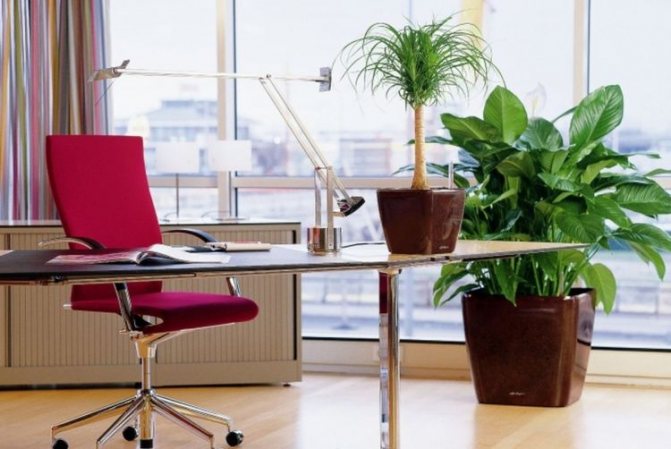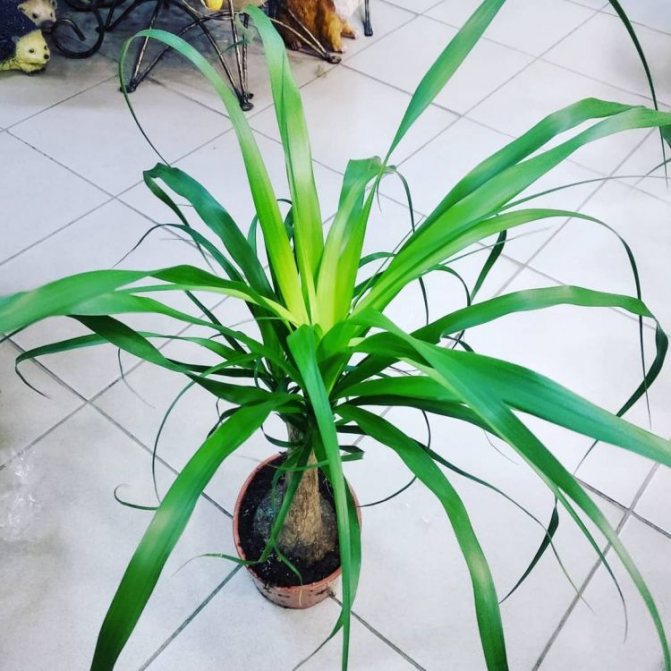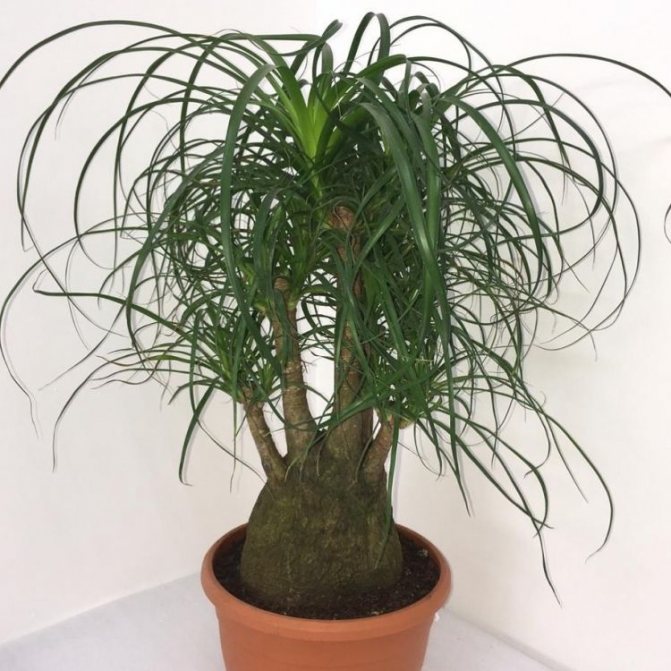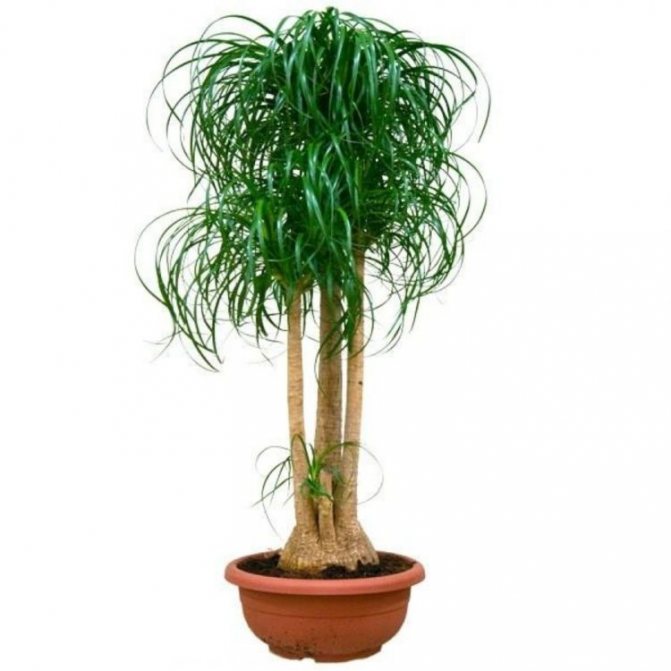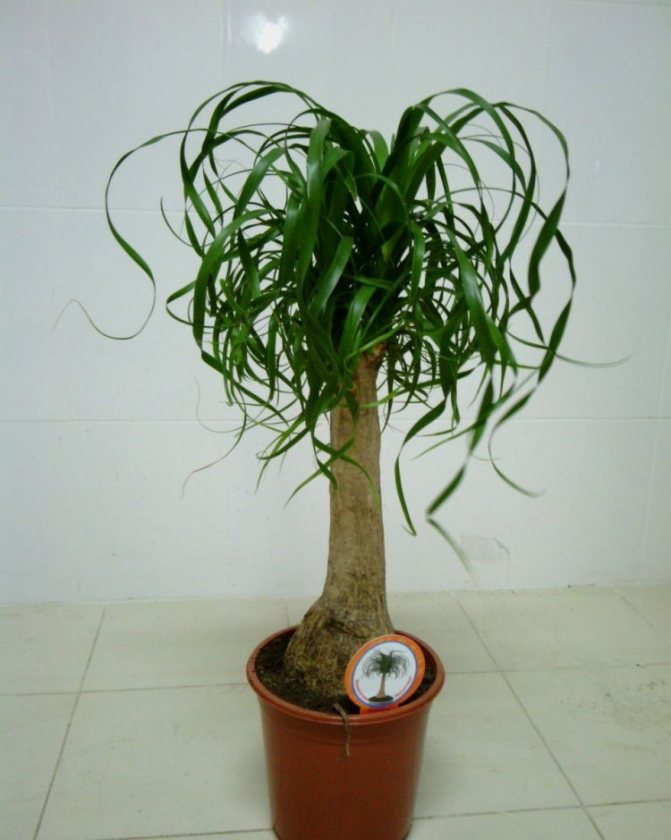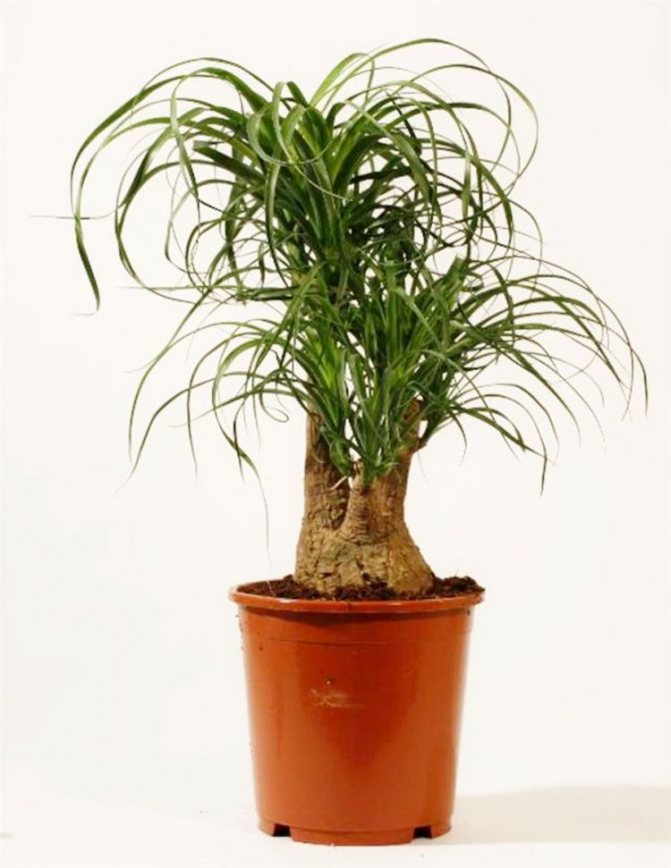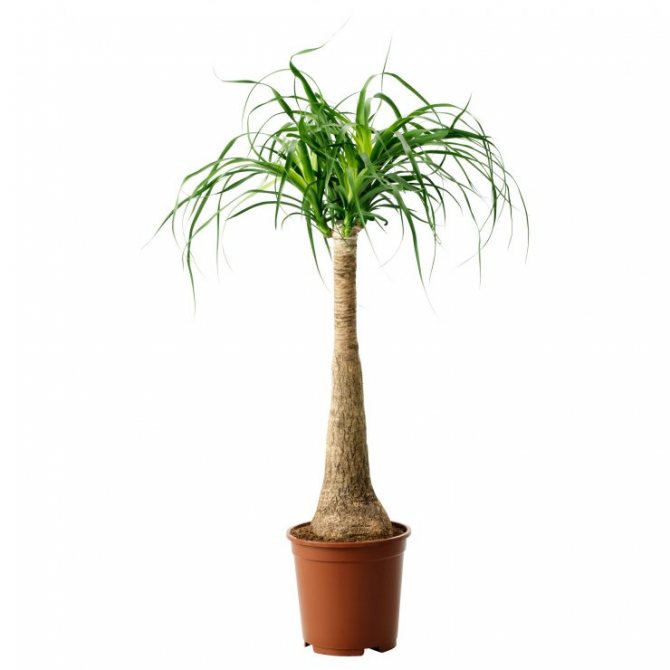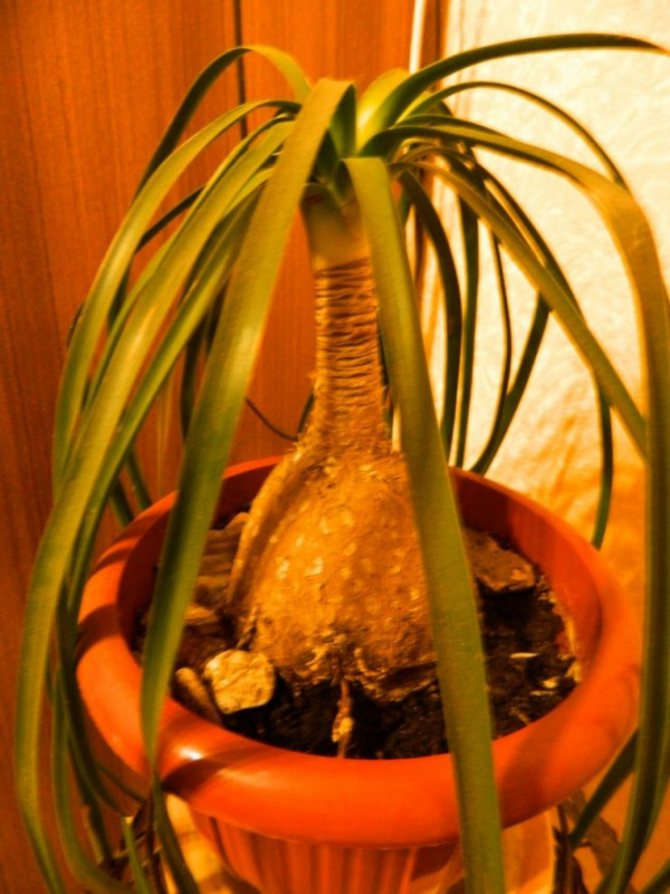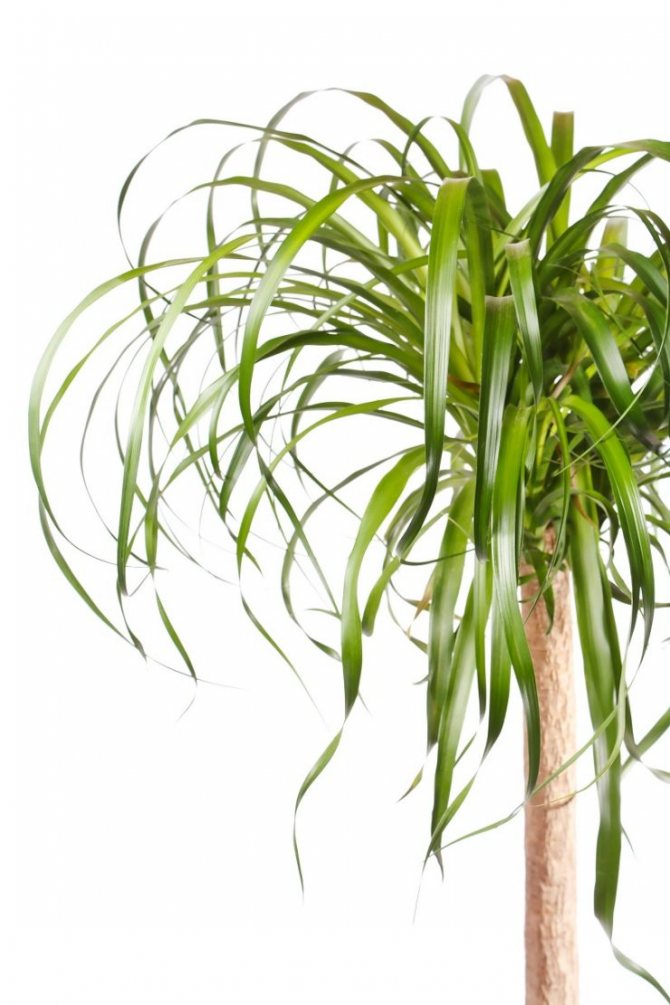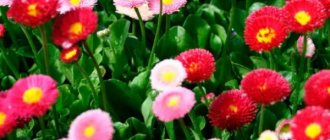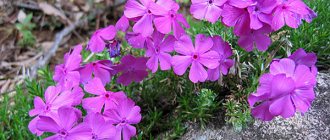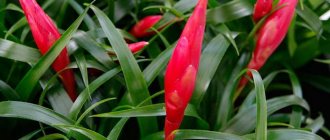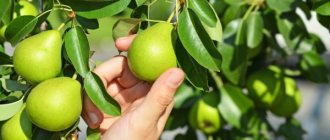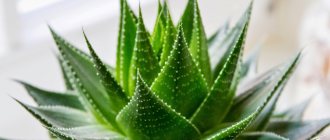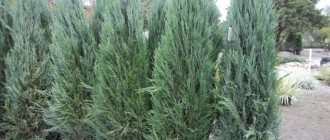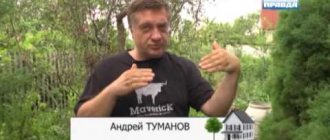Nolina, or bokarney, is often grown as a showy houseplant. The most suitable view for this is nolina bent (Nolina recurvate), or bokarnea bent (Beaucarnea recurvate). Succulent is considered persistent and unpretentious. However, some mistakes in leaving lead to his death.
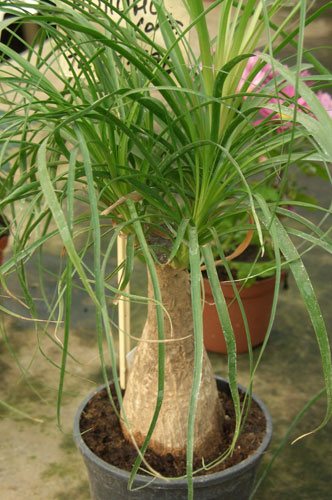
Nolina (Bocarnea)
POSSIBLE DIFFICULTIES DURING CARE
What difficulties can arise when caring for a sidecarnea? There are several common problems:
Loading ...
- If the leaves become smaller, turn pale and sag, then this is evidence of a lack of light / high temperatures / tight capacity.
- When brown spots form on the tips of the leaves, this indicates that the air in the room is too dry.
- Mold and trunk rot are caused by regular waterlogging.
- If the room is too damp, the leaves will turn yellow and fall off.
- Insufficient watering will cause the stem to wrinkle and dry out the edges of the leaves.
- In dry air, a spider mite or scabbard can be affected. You can eliminate pests by washing the leaves more often. Although nolina is unattractive to pests, because its leaves are too tough.
Possible problems
If Nolina's leaves become shallow and pale, it's time to transplant it, since the tree has become cramped.
Drying of the tips of the leaves means that the tree is too dry; to fix the problem, you need to water the plant and wipe the leaves with a wet cloth.
In this video, there are some more helpful tips on how to prevent nolin problems:
When the tree trunk wrinkled after a long break in watering, he needs resuscitation. To do this, nolina is urgently placed in water for 1 hour, and then treated with a solution of succinic acid at a dosage of 0.1 percent.
Most pests are not able to gnaw through the leaves of a plant, but still sometimes it can be attacked by such enemies:
- spider mite;
- shield;
- mealybug.
To get rid of parasites, it is necessary to wash the leaves with a solution of laundry soap, which after 2 hours of exposure is washed off with clean water.
Types of bokarnea
Bocarnea still causes great disagreement among taxonomists. A number of botanists attribute all species of this plant to the genus Nolina. Some believe that Nolina and Bocarnea are synonyms denoting the same genus, which is often reflected in the relevant reference literature through a double name, for example: Beaucarnea gracilis (Nolina gracilis).
But amateur flower growers should not be too puzzled by classification issues, since only one species is popular in room culture - Bokarnea bent (Beaucarnea recurvata) is a perennial plant, in nature reaching a height of 8 m, and at home rarely exceeding one and a half meter indicators. The trunk, as in all species, is strongly thickened at the base and covered along its entire length with a smooth gray-brown cork-like bark. Leaves are dark green, rigid, linear, about 1.5 m long and 1 - 2 cm wide.
In addition to this species, you can purchase other bokarnei, although they will have to be grown mainly from seeds.
Bocarnea long-leaved (Beaucarnea longifolia) is a plant with a height of about 2 - 3 m, giving from 3 to 5 trunks-branches. The leaves are relatively soft, green, 0.5 - 2.5 m long and 1 - 3 cm wide.
Compressed bokarnea (Beaucarnea stricta) is a medium-sized species, branching at the very base and reaching a height of 10 m. The leaves are bluish-green, 50 - 80 cm long and 0.8 - 1.5 cm wide, straight. Unlike the previous species, they form not drooping panicles, but thorny dense spherical "brushes".
Bocarnea Lindemeira (Beaucarnea lindheimeriana) - a species with an unexpressed underground trunk. Long one and a half meter creeping leaves grow directly from the ground. Due to their rigidity and confusion, in its homeland this plant was named "Devil's Lace".
Beaucarney Nelson (Beaucarnea nelsonii) is one of the most interesting and attractive species. The height of an adult tree reaches 3 meters, although taller specimens are also known. The trunk is short, in young plants it is weakly expressed and is covered from the very base with bluish-green rigid and straight leaves of a meter in length, forming a huge spiny ball ..
Appearance and features
"Nolina" is a native of sunny and hot Mexico. In the wild, it grows on barren, rocky soils, regularly experiencing periods of drought. It was this way of life that formed the unusual type of plant.
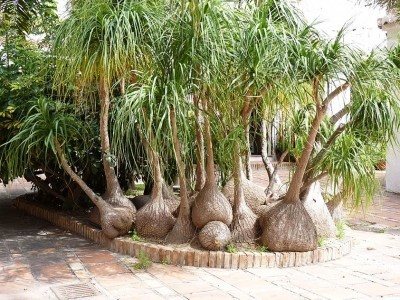

The barrel of the nolina is shaped like a bottle with a heavily thickened base.
The drier the climate, the larger the bulb at the bottom of the trunk, which serves as a natural reservoir for water.
Because of the shape of the trunk, the bokarnea is often called the "Elephant's foot".
The tall trunk ends in a lush plume of dense, narrow, dark green leaves falling down.
In English-speaking countries, the plant was named "Horse's Tail". The size of the nolina is average, but some specimens can grow up to one and a half meters.
Sidecar care
The location for the bottle palm is best on the south side, well lit. Nolina is not afraid of direct sunlight, on the contrary, she gravitates towards it. In the shade, the trunk of the plant stretches, the characteristic thickening disappears, the foliage turns pale. Substrate and planting technique. The soil is needed approximately the same as in the desert - two parts of sand, part of clay, and part of leafy earth. It is useful to add pieces of brick or small rubble. The container for the plant is chosen wide, shallow, and with the presence of drainage holes. The drainage takes up 1/4 of the vessel height.
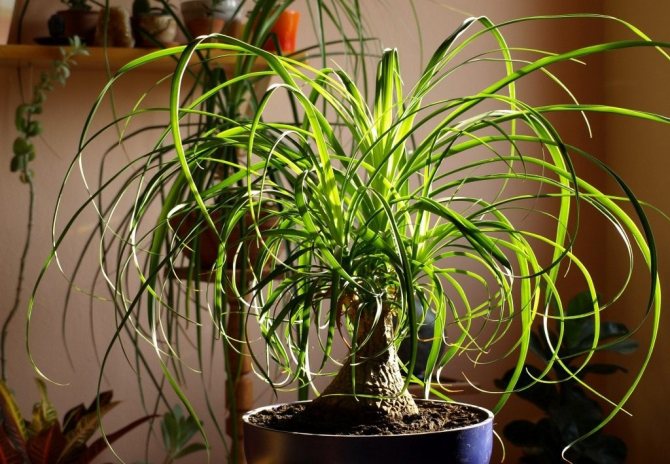

Then a layer of soil is poured. The plant is positioned so that its roots lie horizontally, spread out over the soil surface. A horizontal root system is a prerequisite for the proper growth of bokarnea. Then the roots are sprinkled with the remaining substrate. Lay out small and medium pebbles, or (and) decorative shells on top. This will give the plant an even more exotic look and will also protect the soil from crusting. [!] After transplanting, Nolin should NOT be watered for 2-3 days. The irrigation regime, as mentioned above, provides close to natural.
Twice a year, in autumn and spring, they organize a "rainy season", i.e. water the plant with the submerged method. A pot of nolina is immersed in water; when the earthen lump is saturated, the vessel is pulled out and the water is allowed to drain. The next dive is carried out when the ground is completely dry, not before. The duration of the "wet" season is 2-3 weeks. In the "dry" season, watering is done very poorly, by the drip method. Or they don't water the plant at all, just spray the leaves, imitating the "dew".
At first glance, the tough regime leads to the formation of a characteristic trunk at the bottle palm. Of all the unfavorable factors, waterlogging is the most destructive for bokarnea. The plant rots and, as a rule, cannot be treated. Air temperature is not a critical factor for sidekicks. The plant is adapted to significant daily fluctuations, and even tolerates short-term negative temperatures. However, indoor drafts are undesirable, especially cold and damp ones.Bottle palm fertilization is combined with periods of heavy watering. Complexes are used for ornamental-deciduous plants, but the indicated dose is halved.
Purchase and adaptation rules
The best time to buy a bottle tree is in spring. During the spring-summer season, it manages to go through the adaptation period and prepare for the cold season.
The price depends on the variety and, on average, is about 1000 rubles.
When purchasing, pay attention to the appearance of the plant. Healthy:
- foliage of rich color, without spots, signs of diseases and pests;
- root system without damage.
A newly purchased homemade succulent needs a two-week quarantine, during which it is not fed or transplanted.
Flower transplant
The most optimal variant of this procedure is transplantation once every three years. The pot should be small in size. Frequent transplants are unnecessary and in some cases can cause significant damage. Nolina prefers to live in cramped conditions, and the soil should not be oversaturated with fertilizers. The land is great for cacti, and if you add a little forest soil and sphagnum moss to it, then you will not find a better habitat for the bokarnea.
The main rule that you must always remember is correct and high-quality drainage. The pot must have large drainage holes. All this is necessary for the absence of stagnant water.
You can transplant a flower only after the roots of the earth are completely entwined. Be sure to plant the pet at the same depth at which it was previously. After moving the plant to another vessel, do not water for three to four days.
Growing conditions
Desert succulents are not picky about conditions and will survive with minimal maintenance.
He prefers a lighted spot on the south or southwest windowsill.
- In its natural environment, it grows on stony, barren land.
- Suitable for indoor cultivation is a light water-absorbing and breathable substrate for succulents.
Expanded clay or gravel is added to the finished soil to increase aeration.
You can prepare a soil mixture yourself by mixing clay soil, humus, coarse sand, small pebbles (expanded clay mixture) in proportions 1: 1: 0.5: 0.5.
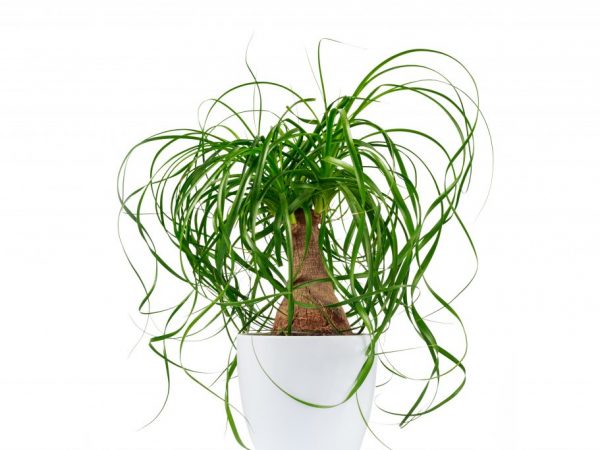

Bocarnea needs a special primer
For preventive protection against the development of fungal infections, it is recommended to add charcoal or activated carbon in a small amount.
Humidity
Moisture readings are not particularly important for a desert plant. The flower culture does not require spraying. Moistening through foliage is possible, avoiding contact with the trunk.
Temperature
Nolina is a desert perennial. Optimum temperature for home growing:
- in summer - 20-25 ° С;
- in winter - not lower than 10 ° С.
In the summer season, it is recommended to take it out into the open air with protection from precipitation and drafts.
Lighting
The excess of light is not afraid, but it is susceptible to the direct sun. On the contrary, in the absence of sufficient illumination, it fades and dies. To avoid twisting the stem, the flowerpot should be periodically turned clockwise 45 ° C every 1-2 weeks.
The required duration of daylight hours is 12 or more hours.
Reproduction of bokarnei at home
In room conditions, nolin reproduces quite difficult. For reproduction, bokarnei use seeds or lateral processes. Seeds bought in a store are soaked in a weak solution of potassium permanganate for two days, which should be, first of all, healthy, not covered with mold, when soaked, sink to the bottom, and not float. After soaking, they are planted in ordinary moist soil, not deep, at a distance of 1 cm, the container is placed in a well-lit place. You can provide the seedlings with the necessary lighting with fluorescent lamps.The germination temperature should not drop below 20˚C. Soil moisture is constantly monitored. The ground should be moderately moist. The first shoots will appear in 3-4 weeks. To speed up this process, cover the container with seeds with a jar or plastic. When doing this, ventilate at all times and make sure that no condensation forms. Sufficiently sprouted and strengthened shoots are transplanted into separate small pots.
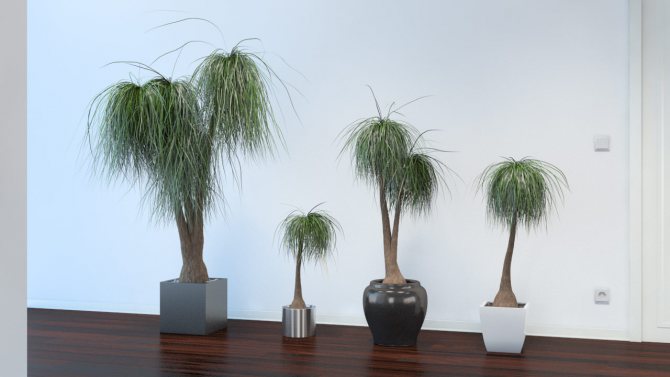

Sometimes it happens that buds swell under the bark of the bokarnea, from which lateral shoots sprout. Since the palm tree does not have aerial roots, after the separation of the appendix, the cut site is treated with phytohormones that stimulate the formation of roots. At a slight slope, the shoot is planted in the ground. The planted process is covered with a transparent container, which is then constantly ventilated, placed in a warm and bright place. After the bokarnea began to overgrow with the first roots and fresh leaves, the cap is removed. The plant is taught to new conditions of detention.
A common problem with home care for a bokarnea or nolin plant is over or under watering. From excessive watering or excessive dampness in the room, the leaves turn yellow, turn brown and fall off. From a lack of moisture, the tips and edges of the nolina leaves dry out, and the stem becomes wrinkled.
Reproduction
You can propagate the plant seeds or shoots... It is quite difficult to do this at home.
When propagated by seeds, they are sown in late February - early March. Before planting, the seeds must be soaked for 2 days in water. Those that have surfaced should be thrown away, as they are unsuitable for sowing. The seeds are planted in the same soil as for adult plants and covered with glass to create a greenhouse effect. For more information on the propagation of nolina by seeds, see here:
The sprouts appear in 2-4 weeks. The glass is removed when the first leaves appear. Nolina from seeds grows extremely slowly. However, knowing how to grow nolina from seeds can be successful.
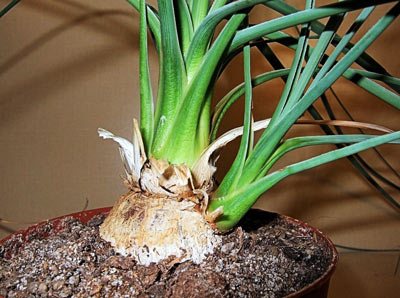

The plant rarely gives side shoots... The shoot chosen for propagation should be cut off near the base and sprinkled with crushed charcoal or ground cinnamon over the cut site.
After that, you need to leave the shoot to dry for 5 hours.
Then it is planted in the ground and covered with a jar to create a greenhouse effect.
The pot is placed in a warm place and the plant is ventilated, removing the jar once every 3-4 days. After the roots are formed, new leaves appear; and this is an indicator that you can remove the jar.
Bocarnea - description
In the open air, a bokarnea plant can grow up to 10 meters. Its palm rosette is akin to a crown and is often used by locals as the main material for woven fabrics and belts.
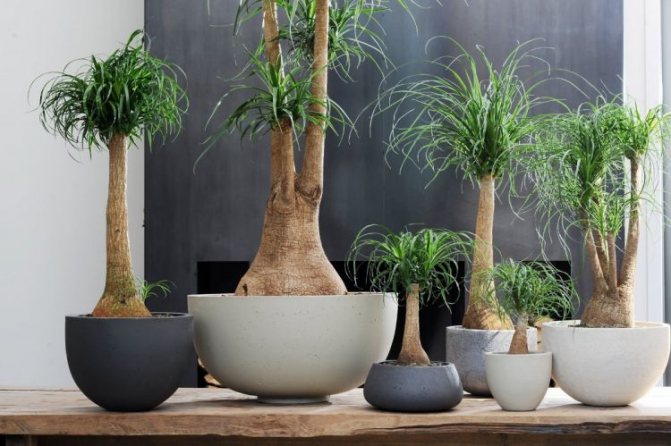

Nolina is very famous for its crown. It is shaped like an elephant's paw, but some call it a ponytail.
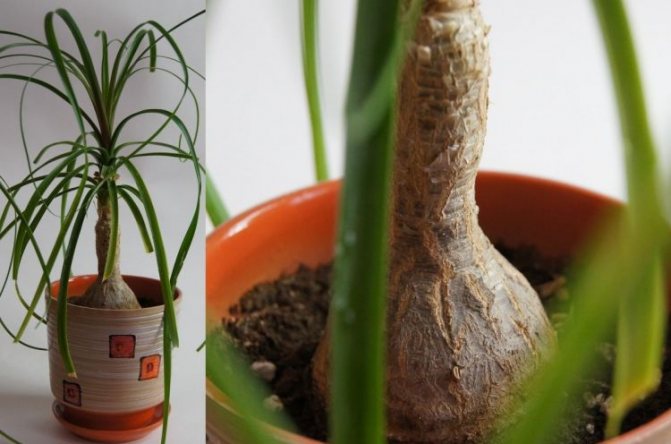

The corresponding feature applies to indoor varieties of bokarnei. True, their decorative effect allows the plant to reach 40-60 centimeters in only 6-10 years.
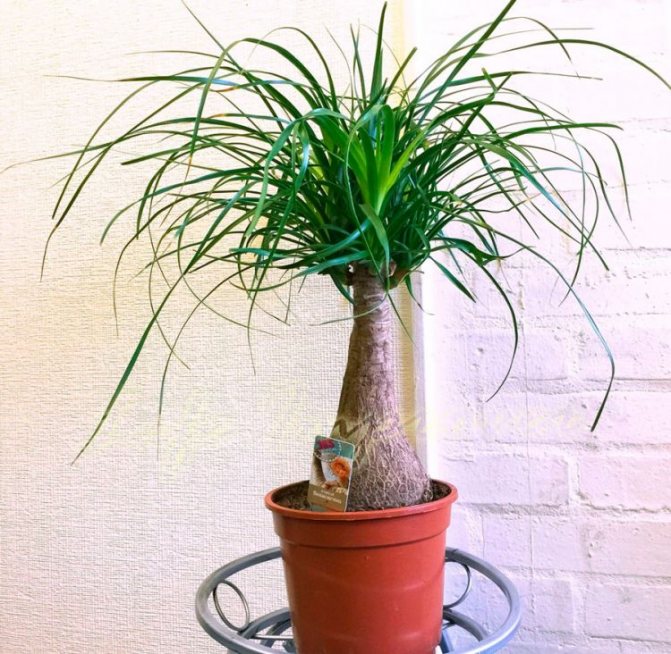

Many bokarnea are remembered for its root, which expands at the very surface of the soil, forming a leg like a vessel.
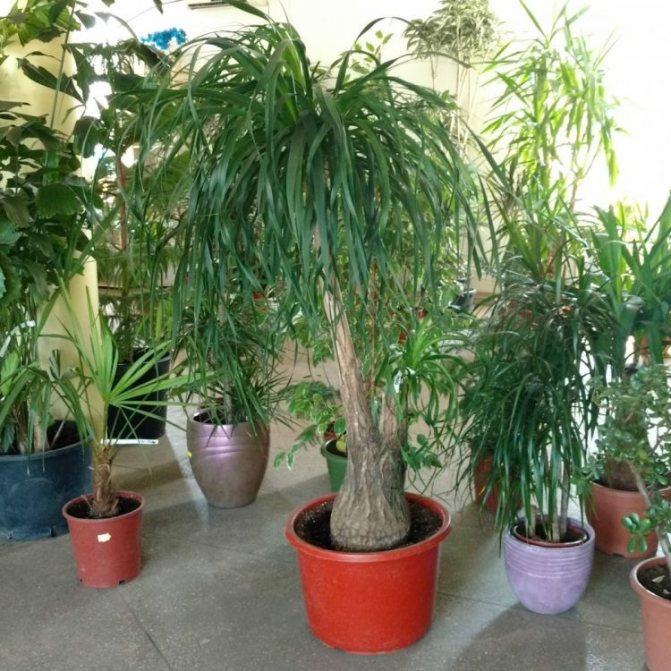

This feature is due to the accumulation of a large volume of water inside the trunk. Therefore, bokarnea is suitable for growing even in soil that is not rich in minerals.
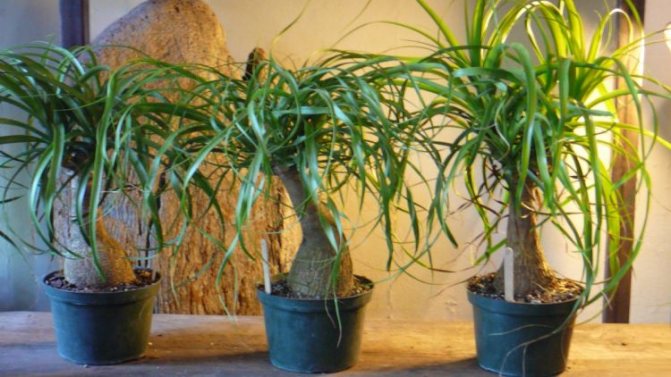

This is a rather striking sight - the crown grows with 60-centimeter flower stalks that mask the early inflorescences. Moreover, the lush flowers on one palm tree come in different shades - cream, milky, light turquoise.
Providing an ideal microclimate
Bocarnea looks great in a single copy, this palm tree can single-handedly give the interior a Mexican flavor.And it will fit perfectly into the collection of succulents and cacti, because they have a close origin. These qualities make the flower popular among gardeners, but it is important to consider its needs.
This plant is native to the southern highlands of North America, areas where the land is severely scorched by the scorching rays of the subtropical sun. As a result of the fact that droughts are not uncommon here, the bokarnea has adapted to store moisture, accumulating it in the lower part of the trunk. It acquired the shape of a bottle, scientifically - caudex, for which another name "stuck" to the plant - "bottle palm" or "bottle tree".
Interesting fact! The Italians nicknamed the bottle tree the "smoke eater" for its ability to adsorb harmful compounds that enter the air in the form of smoke and gas. Nolina can also improve air quality at home, in addition, it is believed that it strengthens the immune system and has a positive effect on the nervous system.
In order for the flower to feel good away from its native spaces, it is desirable for it to provide the following conditions:
Temperature regime
The weather conditions in arid regions, where bokarnea grows, are not particularly mild, so the plant is "hardened" and can withstand sudden temperature changes without much loss. In summer, the thermometer can rise to +50 ° C here, and drop to -10 ° in winter. Therefore, there is no need to create special conditions for the flower.
It is ideal if the air temperature in the warm season will vary from + 20 ° to + 25 ° C. During the period of winter dormancy, when the growth of the flower slows down, the most suitable temperature is from + 10 ° to + 15 ° C.
Humidity
The bokarney plant is a succulent capable of retaining moisture, withstanding even prolonged droughts, it is not afraid of the scorching sun either. Therefore, the flower feels good in dry air and does not need additional moisture. In winter, when the central heating works, the crown of the nolina can be sprayed occasionally, but the palm tree can do without this procedure.
But it is recommended to remove dust and dirt from the leaves, but without arranging a shower, which can harm the plant. It is best to wipe them down with a damp sponge.
Lighting
It is desirable to place a container with succulent in a lighted place, bright diffused light is best suited. You can place the pot next to a window facing south-east or south-west.
If it is warm and dry outside in summer, you can endure the bokarney “to breathe in the air and warm up”. Direct sunlight is not so scary to her, but an indoor flower tolerates drafts and rains hard and may even die.
With a constant lack of lighting, the trunk of a bottle palm tree can bend, stretching towards the light source. In winter, the flower should be provided with additional illumination - an ordinary fluorescent or special phytolamp, which can extend the daylight hours by several hours.
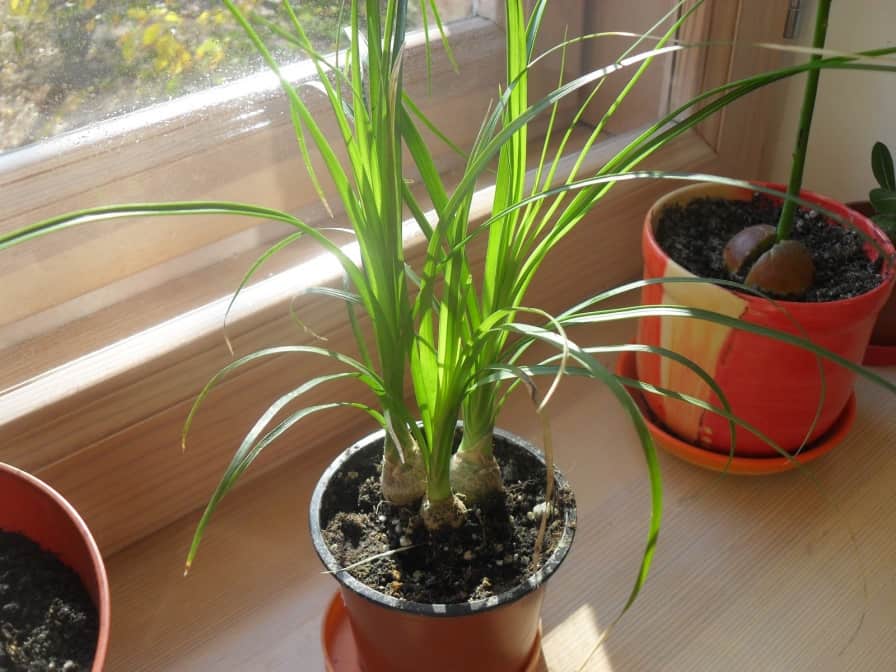

Possible difficulties in growing nolina (bokarnea):
- If the air temperature in the room is higher than +20 degrees Celsius, then the tips of the leaves may turn brown in a large plant. In order to prevent this from happening, the plant should be sprayed.
- If the leaves dry from below and fall off, then you should not sound the alarm: this is a natural process, they just need to be removed at the base.
- If the leaves droop, become dark, lethargic, it means that the plant does not have enough lighting. The plant should be rearranged closer to the light.
- If the leaves grow slowly, there are few of them, it means that the plant is experiencing a nutritional deficiency: feeding or plant transplantation is needed.
For a plant to have a bottle stem, it needs good light and drying between waterings. If the plant does not have enough light, and watering is frequent, then the trunk will stretch.
Loss of moisture during the dormant period can cause the trunk to shrink. In the spring, watering the plant, you will eliminate this deficiency.
Well, if the stalk of the nolina has become soft and springy under the fingers, then this means that it has rotted from excess moisture and in this case you will have to get rid of the plant.
Interesting Facts About Barney
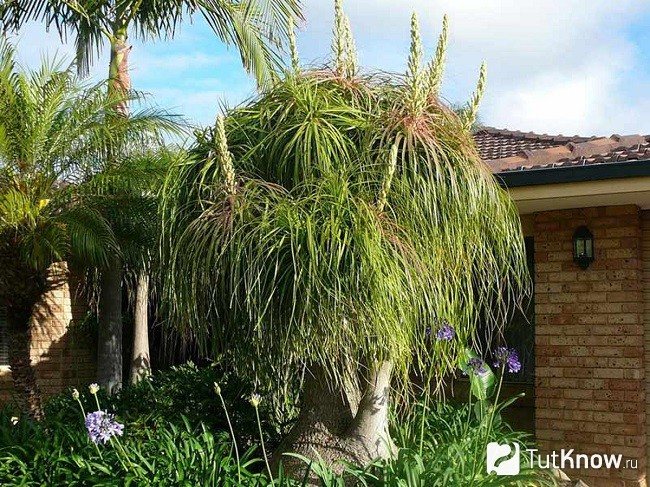

If you grow nolina in your room, then over time it will improve the microclimate in the room, enriching it with oxygen, ozone and aerons. By this, it helps to fight respiratory diseases and strengthens the protective functions of the human body. Bocarnea has a very beneficial effect on the nervous system of those present, creating a feeling of psychological comfort.
With the help of long bokarnea leaves, enterprising Mexicans have long weave their famous sombrero hats, as well as all kinds of baskets.
Homeland of the plant
This wonderful plant originally grew in Mexico. In his homeland, Bocarnea reaches ten meters in height and blooms, covered with a lush white cap. The dense leaves of this plant are used in basket weaving and sombreros.
Naturally, in room conditions, Bokarnee cannot achieve such dimensions. At most 2 meters high if properly cared for.
However, it is so unpretentious that it adapts to almost any temperature conditions, tolerates heating radiators nearby, it just needs to be protected from drafts.
The dormant period at Bocarnea
Bocarnea will be very grateful if you provide her with the period of necessary rest. For this purpose, starting from the end of autumn, the temperature of the content is gradually lowered, bringing it to +10 degrees.
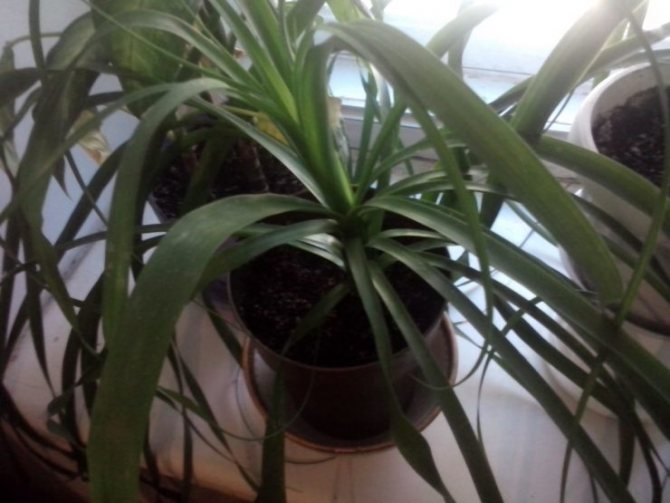

During dormancy, the plant is not watered, but a large amount of light is provided to it.
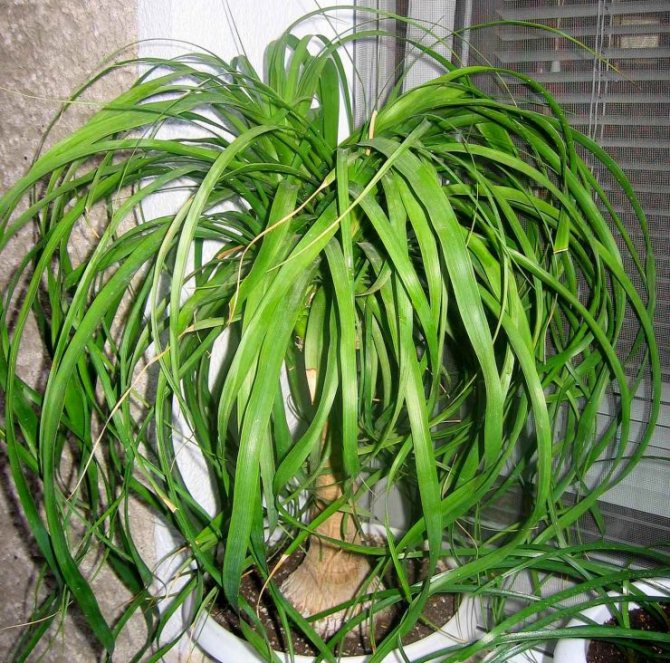

You can leave Bocarnea to winter at normal room temperature. In this case, the frequency of watering is left the same as in the warm season.
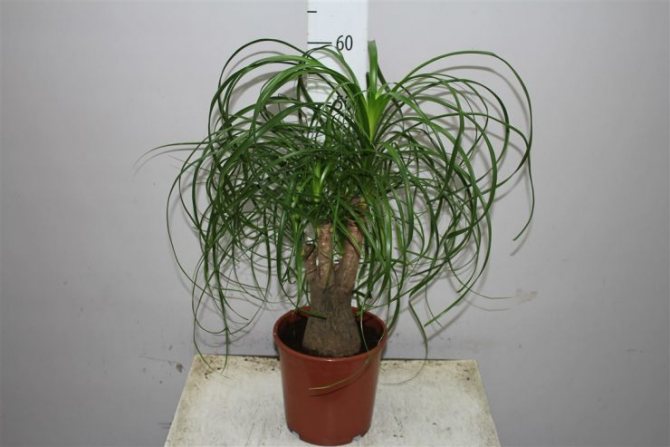

Which soil to choose?
Nolina is a flower growing on rather scarce semi-desert soils. And in terms of its characteristics and requirements, it is similar to cacti and succulents. Room maintenance must be as close to natural conditions as possible. The choice of substrate is extremely important for the plant. Therefore, it is best for Nolina to buy a ready-made mixture.
- If you do not trust stores, then you can prepare the soil for planting yourself.
- The most suitable will be a mixture of the following components: coarse river sand, peat and good leafy soil (ratio 2: 1: 1).
- All components should be calcined for disinfection, then mixed thoroughly.
- The pot for the nolina should be wide and firm, but not too deep, as it has a shallow root system.
- It is required to pour drainage (expanded clay, crushed stone) on the bottom, the layer should occupy about ¼ part of the total volume.
Signs associated with bokarney shtambova
On the forum, many breeders ask what signs exist about buying a plant. Feng Shui experts argue that all indoor plants are able to bring certain benefits to the owner, the main thing is to correctly approach this issue. It is believed that with the advent of bokarnei in the family, harmony and peace will come between the household.
In general, all succulent and tree-like plants neutralize manifestations of rage and anger, help where a person's character is unpredictable. You can put a flower in the hallway or in the living room.
Watering and feeding with mineral fertilizers
If you are just a beginner florist, then nolina is quite suitable for you. Home care won't be too much of a hassle. But it is important to remember that of all the factors, lighting or air temperature is not so much important for her as the water regime. The basic rules are as follows:
- watering should be abundant, but the plant should not be poured, let the earthy lump dry out a little, nothing terrible will happen - this is a succulent indoor flower; nolina, with a lack of moisture, will simply begin to consume its reserves;
- if your plant has a clearly defined period of winter dormancy (at a low temperature, but not less than 10 ° C), then at this time watering is stopped completely;
- water is best poured into a tray, the plant itself will take as much moisture as it needs, and the excess must be drained;
- some plant breeders say that sometimes it is worth spraying the bokarney, but this must be done very carefully so that drops of water do not fall on the trunk; or simply wipe the leaves from time to time from dust with a damp sponge - this is what Nolina loves very much;
- home care also implies the introduction of complex fertilizers, this should be done every three weeks in the spring-summer period, alternating mineral and organic dressings; it is important that the concentration indicated on the package should be halved;
- the most important rule is that as soon as the air temperature drops to 15 ° C, watering must be reduced, if it reaches 10 ° C, then it is completely stopped.
Watering nolina
Watering can be divided into 2 periods: summer (spring, summer and autumn) and winter.
In spring and summer, water is rarely watered - once a week, but in moderation. No need to fill in nolina, she is afraid of excessive moisture.
A bottle tree can wait out the dry season, but too much water in the pot is likely to cause root rot. Therefore, it is worth watering not earlier than the complete drying out of the earth.
Winter watering depends on the temperature at which nolin is contained:
- at + 15 ° C and above - watering is carried out 2-3 times a month.
- at + 10 ° C - watering should be stopped altogether or watered once every 2 months. The plant is dormant, and watering can upset the established balance of humidity and temperature.
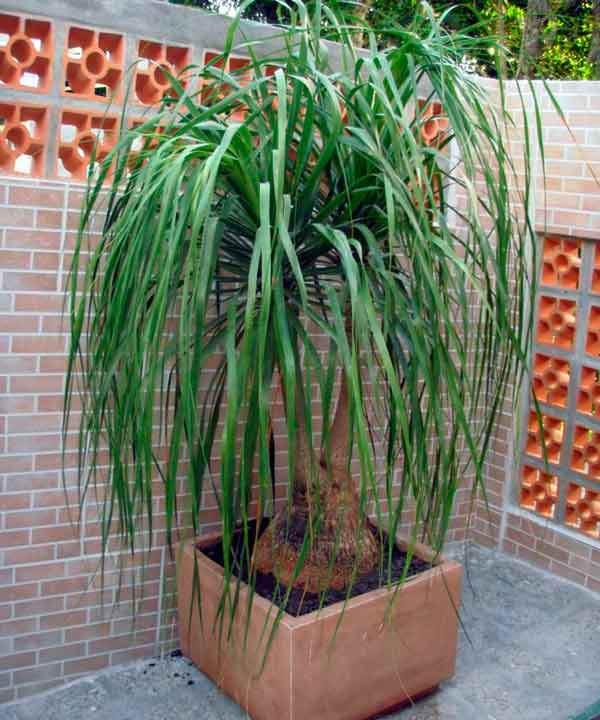

It is better to keep the plant in the fresh air in the summer, only provide protective awnings from rain and wind
Bocarnea - the acquisition of a young palm tree
To sell nolina, florists are used to placing several themed palms in one container. However, it is better to purchase one copy. So good for practice and economical for setting up.
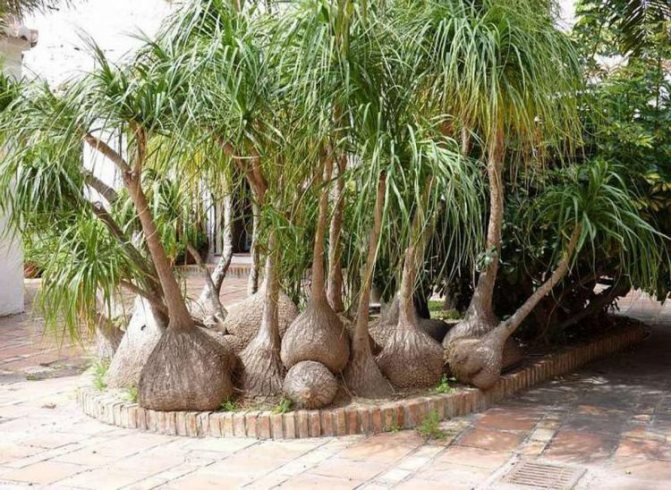

A new tree requires replanting into a pot of fresh soil. However, at first, it is recommended that the bokarney be placed separately from the rest of the plants for at least a week. Perhaps the “displaced person” is sick or pests.
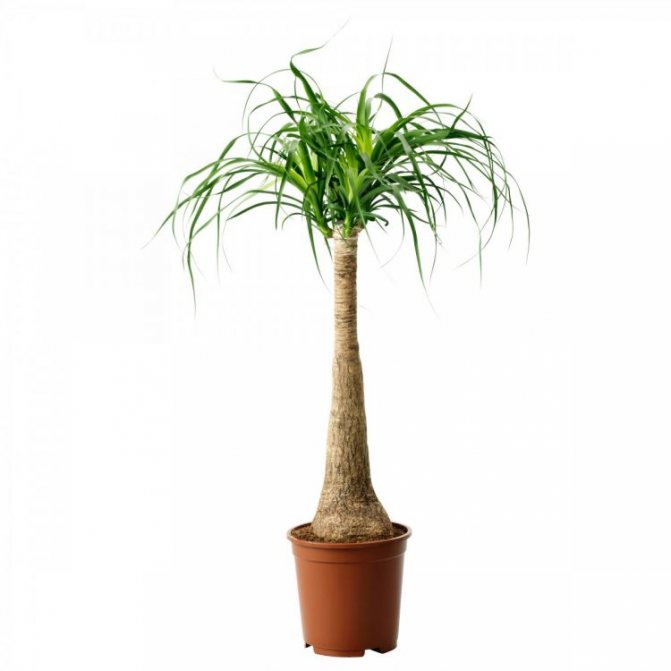

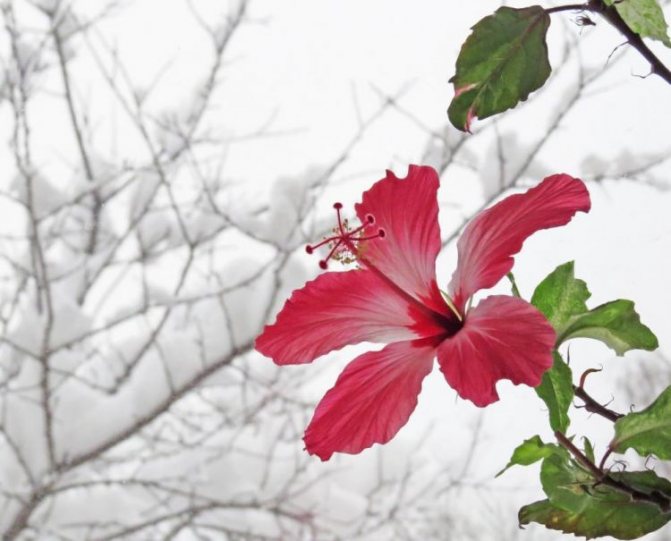

Hibiscus - seedling selection, care, reproduction and advice on watering the plant. 110 photos and video review of the flower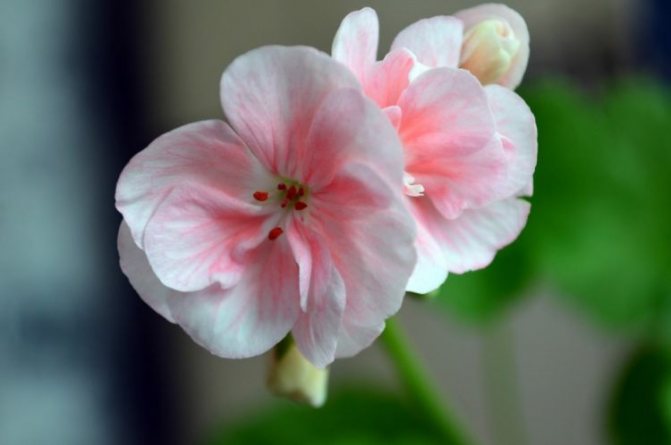

Geranium - secrets of growing, options for use and features of use in decor (95 photos and videos)
- Ahimenes: types, planting, care, reproduction and secrets of use in the garden and in the interior (115 photos)
Place in the house
The best location is on the south side. Or where there is good bright lighting. Nolina (bottle tree) is not afraid of direct sunlight, but, on the contrary, loves. This is the only way to form a characteristic thickening of the trunk, in the shade it will stretch.
- In winter, she will be comfortable in the apartment, and in summer, you can put a pot with a plant on a balcony, loggia, or take it out into the garden. In general, nolina is a flower well suited for our homes with hot central heating and often dry air.
- The worst combination for her is the combination of cold temperatures (about 10 ° C) and high humidity in the soil or atmosphere. Therefore, if for the winter you put nolin at rest and keep it in a cool room, then you must first reduce watering, and then stop it altogether.
- Nolina looks great not only in houses and apartments, but also in an office setting.
Treatment of diseases and pests
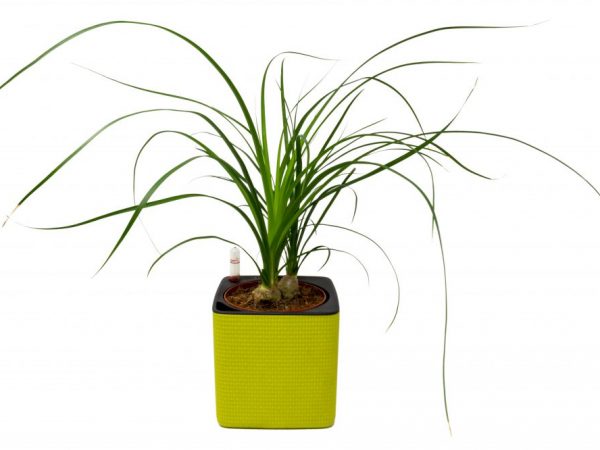

With proper care, the flower rarely gets sick.
The main problems with home growing of bokarnea are associated with a violation of care.
| View | Ways to fight |
| Loss of elasticity of foliage. Caused by prolonged exposure to dry air combined with elevated temperatures. | The humidity is increased. The plant is sprayed. Temperature readings are reduced. |
| Shrinking of the trunk and drying of the tips of the leaves. The reason lies in the lack of watering. | The succulent is watered. |
| The leaf plates are repainted brown, dry, fall off, the base rots. Overflow related. | Watering is normalized. In a critical situation, the flower culture is transplanted into a fresh substrate, after cutting off the rotten areas. |
| Slow growth. Signals about nutritional deficiency. | Nitrogen-containing dressings are introduced. |
| The trunk does not develop in thickness. More often it occurs due to a lack of illumination in conjunction with overflow. | Reduce watering and increase lighting. In winter, the lack of light is compensated by the use of artificial sources - fluorescent lamps. |
| Mealybug. Leads to the appearance of white bloom on the leaves. | The plant is treated with an insecticide, for example, Aktara. |
| Spider mite. It is easy to recognize by the distribution of the non-vegetative part of the white web. Distributed in dry air. | The succulent is sprayed with an insecticidal preparation, for example, Actellik. |
| Shield. Causes yellowing and wilting of foliage. | The leaf mass is wiped with soapy water (50 g per 1 liter of water). In case of mass defeat, additional treatment is carried out with one of the insecticides. |
Beaucarnea, Nolina longifolia
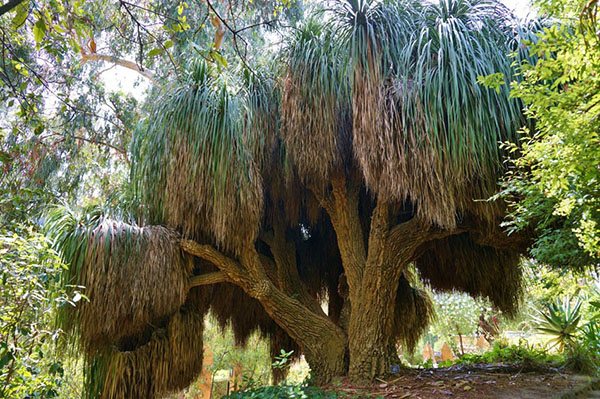

Mexican herb tree, so long-leaved nolina is called in areas where it occurs in nature. A large bokarnea plant, as in the photo, turns with age into a branched multi-meter tree, whose trunk is covered with a dense cork layer of bark.
A native of Mexico, long-leaved bokarnea or Nolina longifolia has a powerful upright trunk with a thickening characteristic of a plant of this genus in the root part. Hard, hanging leaves are located at the apical part. Over time, the old foliage dries up and turns into a kind of skirt that covers the trunk almost to the ground.
How to choose when buying?
If you do not have nolina yet, but you are determined to add this plant to your collection of flowers, you will have to look for it in free sales.
There are several selection criteria, and you should pay attention to the following characteristics:
- the brightness of the color of the foliage (the leaves should be a rich dark green color);
- lack of dark spots, drying out or decaying places;
- abundance of freely hanging foliage (on adult plants, narrow and long leaves should form a voluminous "crown", without bald spots).
In addition, deep cracks or wrinkles on the tree trunk should not be ignored, which indicates a violation of the conditions of the selected specimen. The choice of trusted and reputable points of sale will help to increase the chances of a successful purchase, but it is better to avoid dubious sellers in spontaneous markets.
Did you know? From the long leaves of nolina, Mexicans have long made hats (especially the famous sombrero hats) and weave baskets that can withstand a large weight (up to 10 kg or more).

